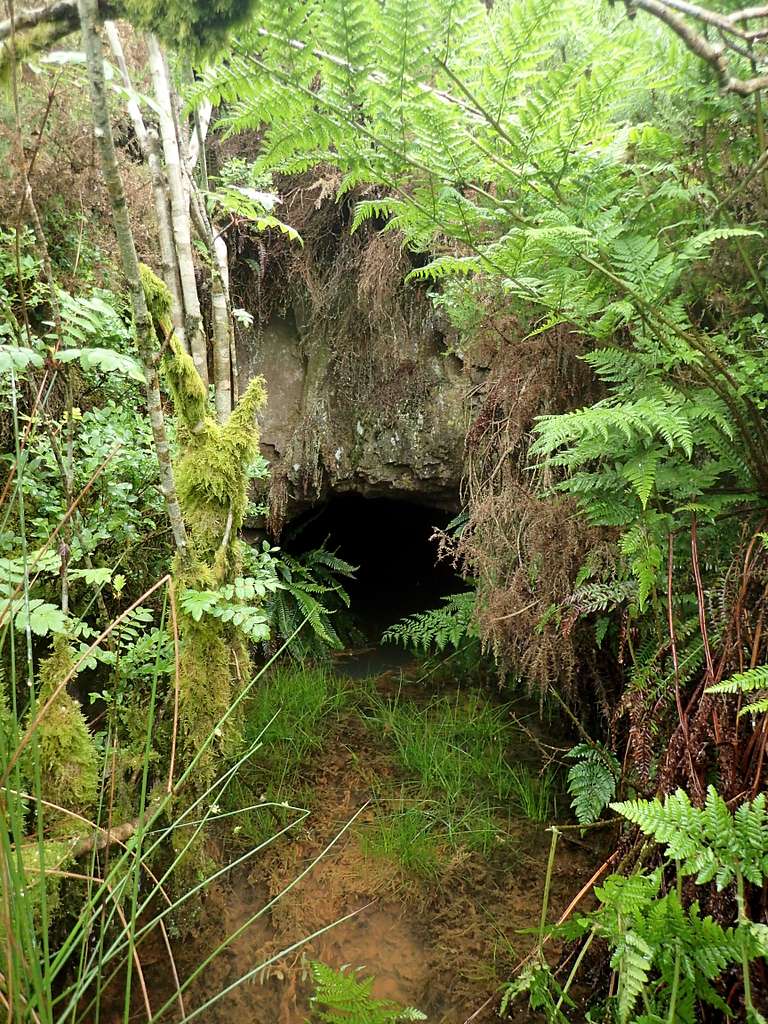Wheelpit, crusher house, deep adit and engine shaft. Bick raised the possibility of Little Wonder still being in situ.
| Year | Activity |
|---|---|
| 1852 | Re-opened by Henry Francis associated with the Bronfloyd Company of J.B. Balcombe. Shallow adit and 10fm engine shaft, pumped to expose good copper and lead ore. Deep adit started 120fm to the east, which on intercepting the presumed engine vein was found to be a clay joint. |
| 1870 | After poor start here, and recent good success at Bronfloyd, Balcombe forms new company for another attempt. Good ore was soon found, with favouriable reports by the Taylors. Captain Williams describes it as a Cardiganshire Van. Underground steam engine called Little Wonder installed in chamber. |
| 1871 | 25fm level meets the lode, but with significant vertical missalignment. Good ore found and 250 tons sold. |
| 1873 | Little Wonder retired for reasons of economy. Wire rope from surface waterwheel used to power pumps instead. No ore returns. New company takes over. |
| c1874 | Desperate search for Esgair Hir lode in east section of the sett. Work ceases. |
| 1878 | Revival by Blaen Ceulan United, with Jonathan Pell in charge. Workings down to 30fm. 99 tons of ore sold. |
| 1884 | Final closure. Sale advertisement stating: The richest ore yet seen is going down below the bottom level. |
Publications (16)
- (1922); BGS - Mineral Resources of GB (c1920s) Vol XX - Lead and Zinc: Cardiganshire & West Montogmeryshire; 242 pages
- (1980); WMS Newsletter Issue 02, December ; 5 pages
- (1984); WMS Newsletter Issue 10 Jun; 3 pages
- (1986); WMS Newsletter Issue 14 Jun; 3 pages
- (1987); WMS Newsletter Issue 17 Dec; 5 pages
- (1988); WMS Newsletter Issue 18 May; 12 pages
- (1993); WMS Newsletter Issue 28 Jun; 8 pages
- (1993); WMS Newsletter Issue 29 Dec; 8 pages
- (2009); WMS Newsletter Issue 60 Spring; 40 pages
- Bick, D.E. (1991); Old Metal Mines of Mid-Wales, The; North of Goginan - Part 3; pp. 36-37
- Edited by D. J. Linton (2012); Welsh Mines & Mining - Towards a Better Understanding - New Research on Old Mines; 152 pages
- Foster-Smith, J.R.; NMRS (1979); British Mining 12 - Mines of Cardiganshire, The; ISBN 0 901450 14 6; pp.19.
- Hughes, Simon J.S. (1988); UK Journal of Mines & Minerals No 5 - Decline of Mining in Mid Wales and Prospects of Revival, The; 10 pages
- Liscombe & Co (1880); Mines of Cardiganshire, Montgomereyshire & Shropshire; 52 pages
- NMRS; British Mining 93 - Memoirs 2012; pp.76.
- NMRS; Newsletter May/1998; pp.7.



